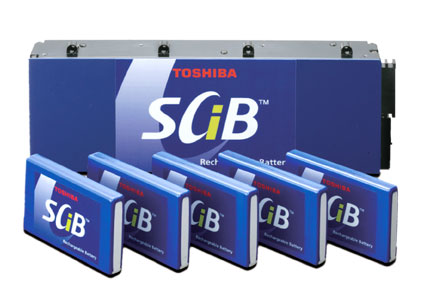
This could be a revolution in automobile industry. The Lithium-titanate battery is a type of rechargeable battery, which has the advantage of being faster to charge than other lithium-ion batteries. Some analysts speculate that lithium-titanate batteries will power electric cars of the future.
A lithium-titanate battery is a modified lithium-ion battery that uses lithium-titanate nanocrystals on the surface of its anode instead of carbon. This gives the anode a surface area of about 100 square meters per gram, compared with 3 square meters per gram for carbon, allowing electrons to enter and leave the anode quickly. This makes fast recharging possible and provides high currents when needed. The disadvantage is that lithium-titanate batteries have a lower voltage and capacity than conventional lithium-ion battery technologies.
In future instead of petrol bunks don’t be surprised to find recharge stations for electric cars. As of now it will take more than one hour to charge a battery. SCiB batteries charge in as little as 10 minutes and have a structure that assures an extremely low incidence of internal short circuits.
SCiB products also offer minimal degradation, even after 6,000 or more charge-discharge cycles. This lifespan is often equal to that of the electronic components in which they are used, thus eliminating the need for battery replacement and reducing the environmental impact of waste batteries.
Features:
• Advanced Safety Features Prevent Thermal Runaway, Even if Physical Stress Causes Short Circuit
• Minimal Capacity Loss, Even After 6,000 Charge-Discharge Cycles
• SCiB Batteries Charge in as Little as 10 Minutes
• Large Usable Capacity, Due to Minimal Loss During Charging-Discharging
• High Output Performance Equivalent to Electric Double-Layer Capacitor
• Superb Performance Even at Temperatures as Low as -30C
Applications:
• Forklifts/Automated Guide Vehicles
• Electric Bicycles, Motorcycles
• HEV, PHEV, & EV
• Floorwashers, Lawn Mowers, Other Equipment
• Uninterruptible Power Systems
• Solar Power Generation & Wind Power Generation
A brochure can be downloaded from toshiba site with technical details: http://www.toshiba.com/ind/data/tag_files/SCiB_Brochure_5383.pdf
Toshiba will begin production next year at Kashiwazaki Operations, a new facility in Niigata.
